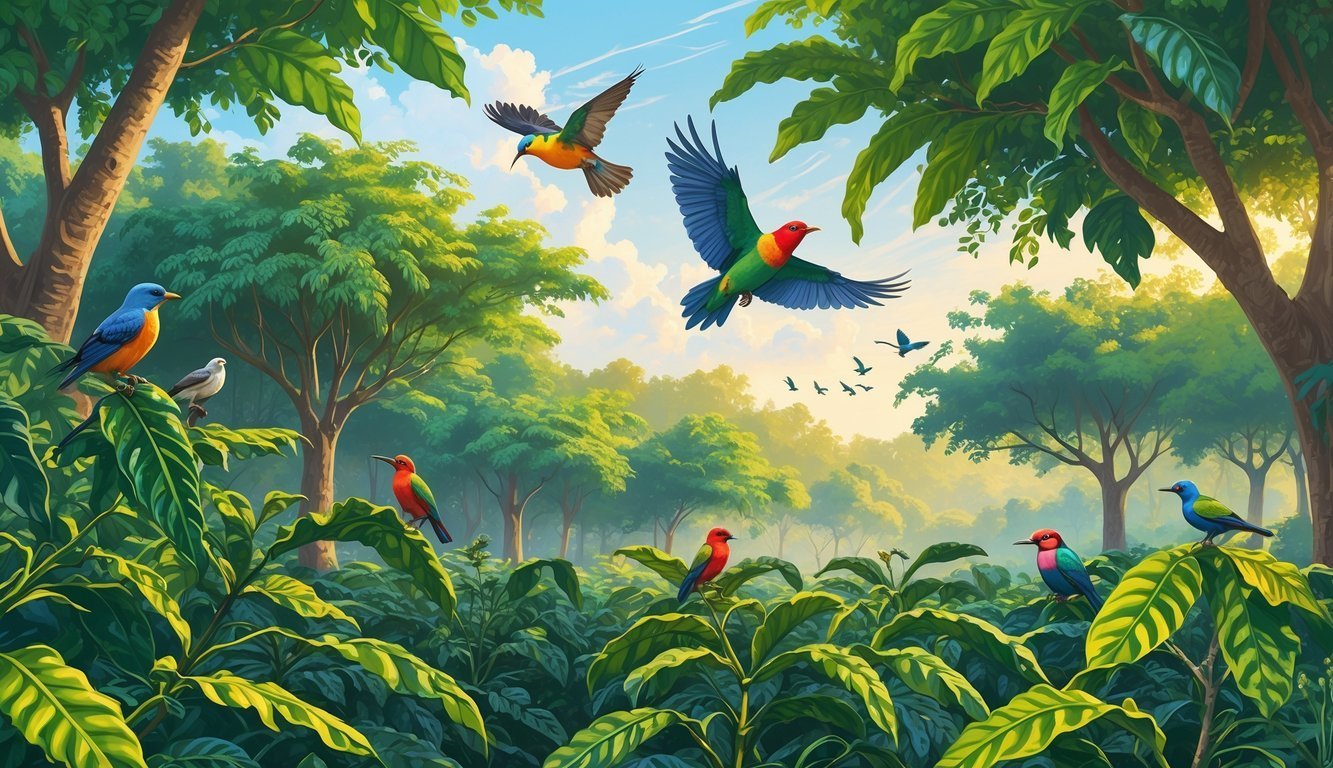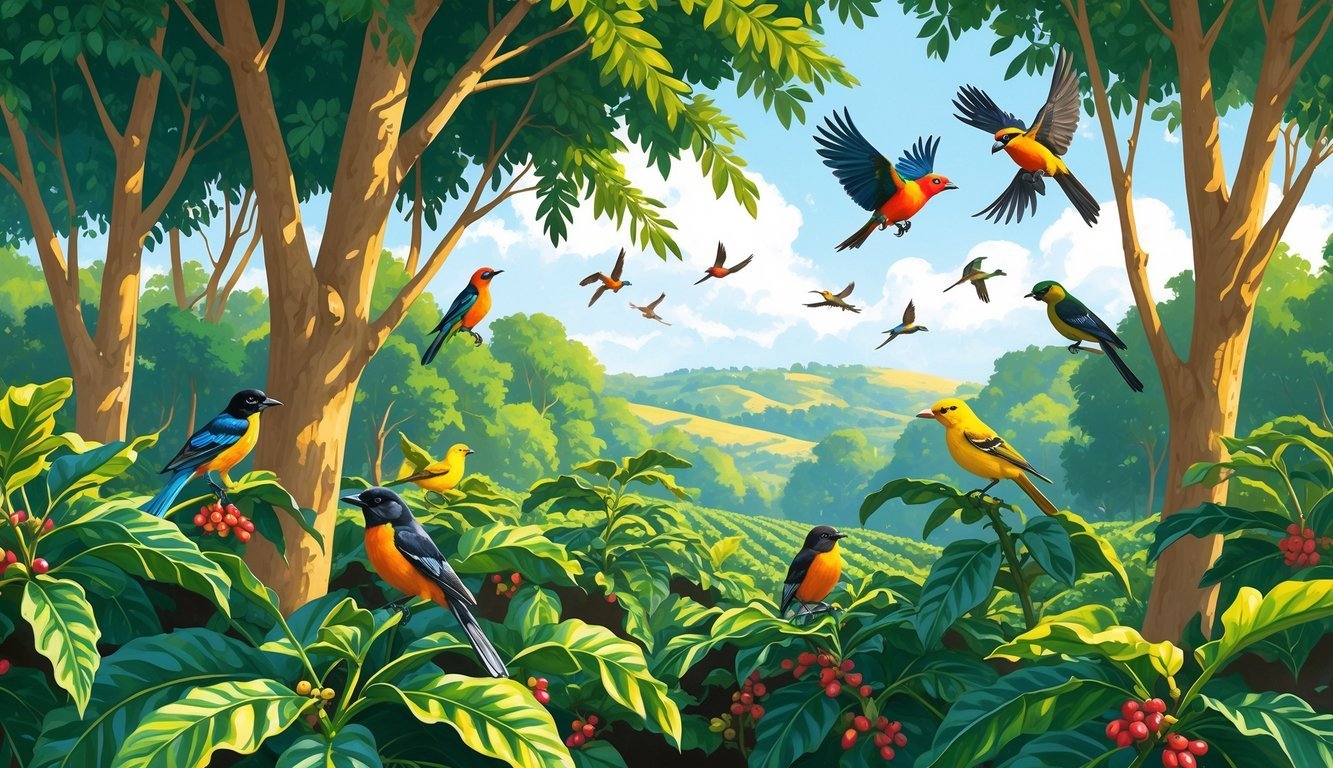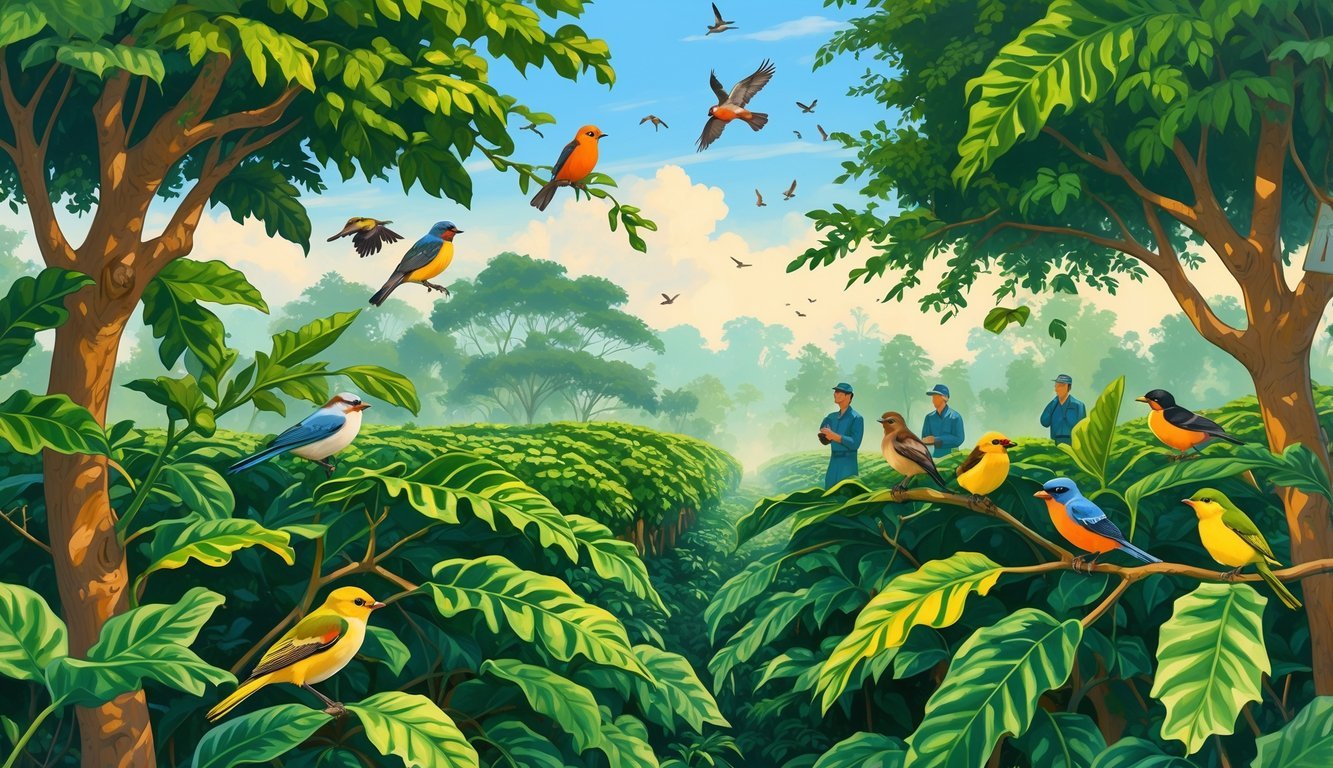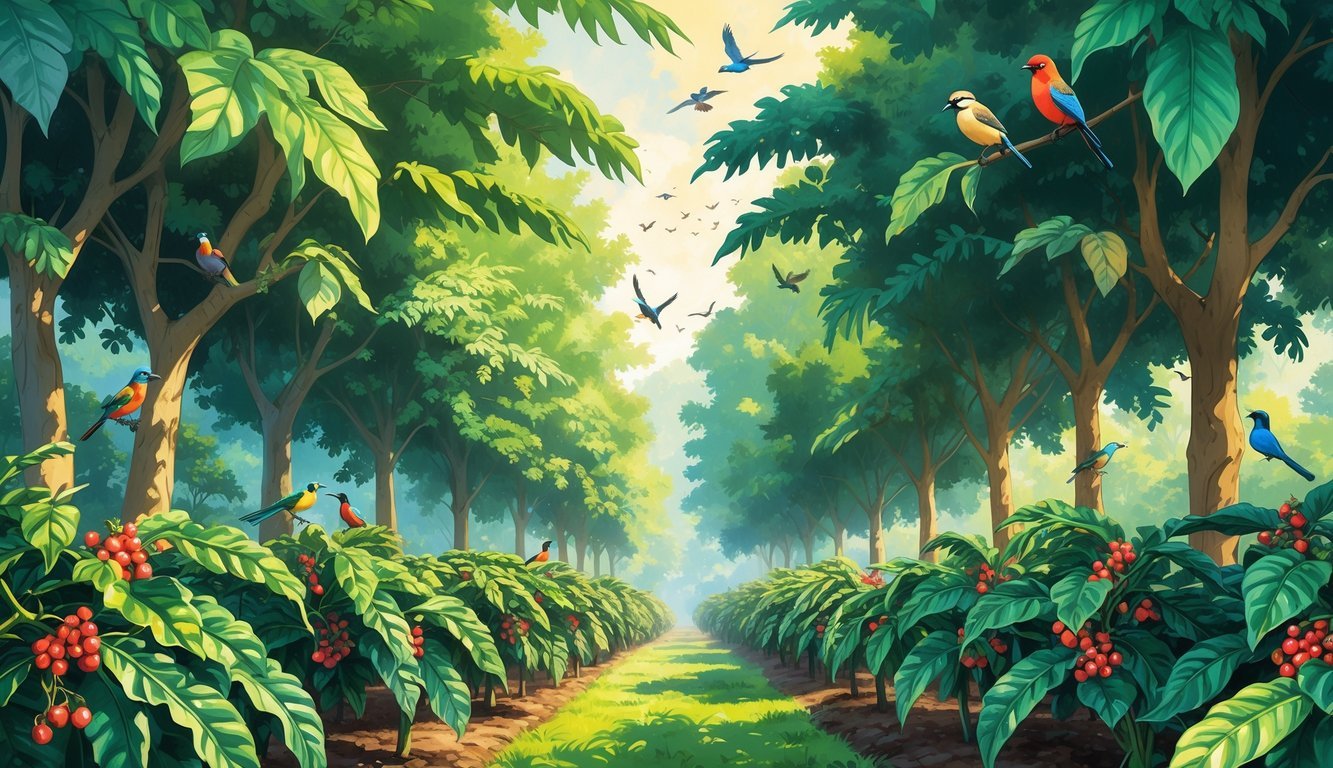PsychNewsDaily Publishers
100 Summit Drive
Burlington, MA, 01803
Telephone: (320) 349-2484
PsychNewsDaily Publishers
100 Summit Drive
Burlington, MA, 01803
Telephone: (320) 349-2484
Shade-grown coffee creates habitats for various bird species, supports natural pest control, and enhances biodiversity, benefiting both farmers and the environment while improving coffee quality.

A new study suggests that shade-grown coffee might play a big role in saving bird populations. Unlike sun-grown coffee, farmers grow shade-grown coffee under a canopy of trees, which creates a natural habitat for all sorts of birds.
This farming method protects bird homes while still producing coffee.
Birds help out by assisting farmers. They eat insects that would otherwise harm coffee plants, so farmers don’t need as many chemicals, and the farm stays healthier.
If more people choose shade-grown coffee, birds and farmers both benefit. It’s a simple change that could really make a difference.
You might be surprised how easy it is to help birds just by picking the right coffee. Learning about shade-grown coffee could make a real impact for wildlife and the environment.

Shade-grown coffee plants grow beneath tree canopies, creating a natural habitat. This setup lets many bird species thrive and keeps ecosystems healthy.
You can spot benefits in bird diversity, farm health, and even the taste of the coffee.
Shade coffee farms keep many trees intact, giving tropical birds a place to call home. These shaded environments support more bird species than sun-grown coffee farms.
You’ll notice more songbirds and migratory birds using these areas as resting and feeding spots. The canopy helps keep temperatures cooler and food sources available, which protects bird populations.
Shade-grown coffee plays a key role in conservation efforts across Central America, especially in places like Costa Rica. When you choose bird-friendly coffee, you help keep these habitats safe.
Shade coffee supports special birds, like warblers and the orange-billed nightingale-thrush. These birds need forest habitats for nesting and feeding, and shade-coffee farms can provide that.
Migratory birds also stop by these farms for food and safety during their long journeys. The variety of insects and berries in shaded areas gives birds the energy they need. By choosing specialty coffee grown this way, you help keep these bird populations going.
Coffee forests and agroforests mix coffee plants with trees, shrubs, and other plants. This mix creates a complex ecosystem that supports different birds and their needs.
These forests do more than help birds. They help farmers too, by reducing pests naturally and improving soil health. Birds eat insects that could damage coffee plants, acting as natural pest control.
When you drink coffee from agroforests, you’re backing a system that’s good for both birds and farmers.

Shade-grown coffee farms support bird populations and help protect ecosystems. Research shows that these farms offer places where birds, insects, and other animals can thrive.
Some programs even certify coffee farms to keep farming sustainable and boost wildlife health.
Groups like the University of Utah and the Smithsonian Institution have found that shade-grown coffee farms help many bird species, including migrating shorebirds. These farms keep forest-like environments available, offering food and shelter to birds during their travels.
eBird data tracks bird populations and helps measure how well these farms protect species. Scientists note that more shade means more types of birds show up.
By keeping trees, shade-grown coffee farms slow down deforestation and support healthy ecosystems. That’s good news for plenty of animals, not just birds.
The Rainforest Alliance runs one of the main coffee certification programs in the U.S. They set rules to protect forests and wildlife, including migratory birds.
Recent research suggests these programs might need some updates to better match what sustainable farming should look like now. Certification encourages farmers to keep more shade trees and avoid harmful pesticides, which helps keep bird habitats intact.
You can look for certified shade-grown coffee to support farms that protect the environment and local wildlife.
Birds living on shade-grown coffee farms do a lot for pest control. They eat insects that could otherwise damage coffee plants. This natural pest management means farmers use fewer chemical pesticides, so soil and water stay cleaner.
Shade-grown coffee farms also work like small forests, supporting all kinds of wildlife beyond birds. You get more biodiversity, which makes the whole ecosystem stronger.
Protecting these habitats slows deforestation and supports the food chain, helping both plants and animals survive.

Shade-grown coffee supports the environment in several ways. It improves the variety of plants and animals on farms, and it can even affect the price and taste of your coffee.
Knowing how to spot shade-grown coffee makes your choice easier.
You help protect trees and cut down on harmful chemicals. Shade from trees keeps the soil healthy and lowers carbon emissions.
This farming style also keeps forest habitats safe.
Yes, definitely. Shade trees give homes to many birds and insects, which help control pests naturally.
That means fewer pesticides, which is safer for the environment and for workers.
Look for labels that say “shade-grown” or “bird-friendly.” Some certifications focus on these practices.
You can also ask your coffee seller or check the brand’s website for info about their farming methods.
Shade-grown coffee sometimes costs a bit more. It may need more care and usually produces lower yields than sun-grown coffee.
But it can be more profitable over time, since there are fewer pests and the soil stays healthier.
A lot of people think shade-grown coffee tastes better. The beans grow slower under the trees, which can make the flavor deeper.
It’s often described as richer and more complex.
Not really. Some regions just need different farming methods because of their climate or how people use the land.
Still, a lot of places can adapt shade-growing to fit their needs. It can help farmers find a balance between growing coffee and protecting nature.